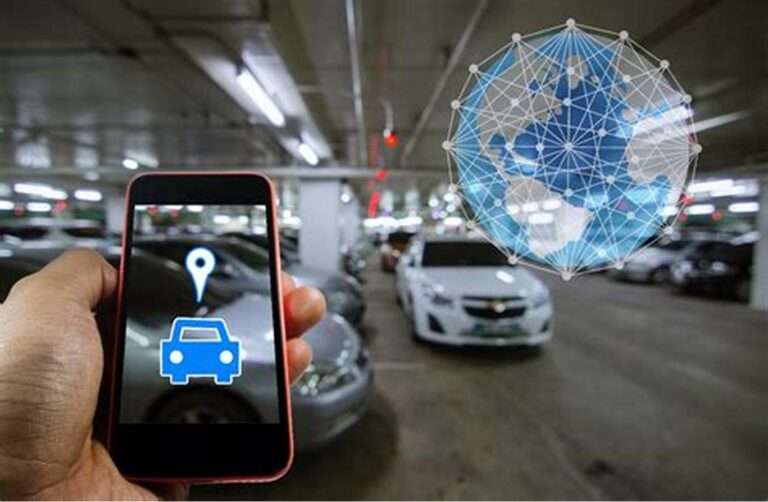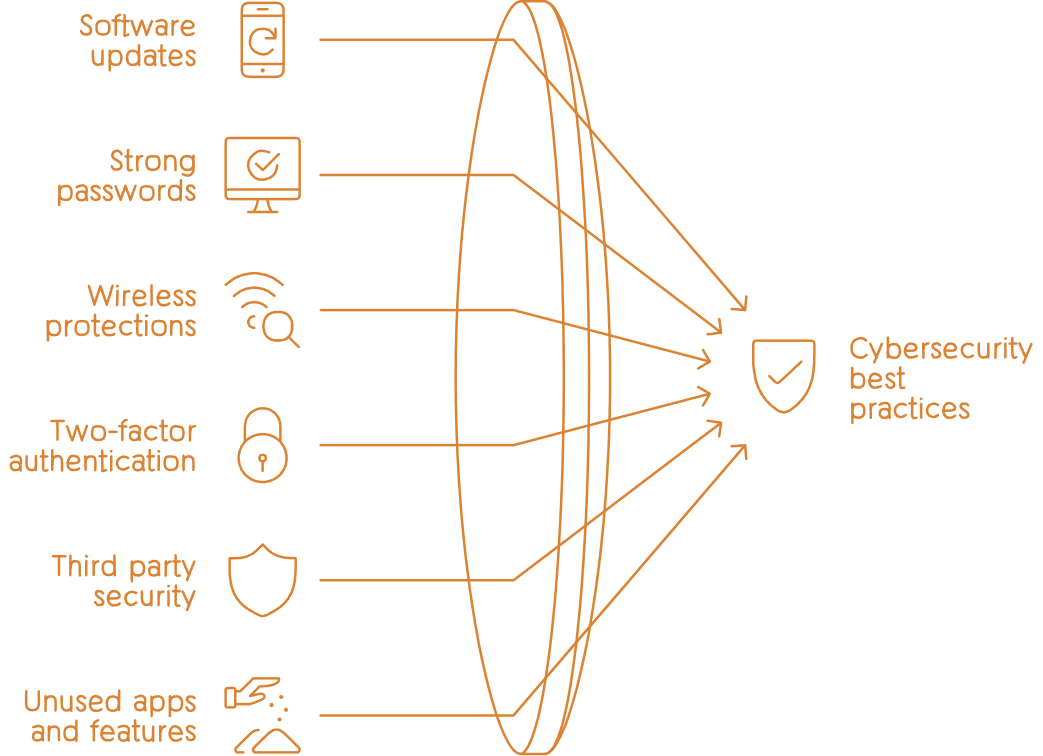
More and more cars nowadays are what we call “smart cars.”
Smart cars have special features like car security systems that make them run differently than regular cars. Some smart cars with advanced security features can detect unauthorized access and even drive themselves!
By 2024, experts predict over 50 million smart self-driving cars with integrated security systems including facial recognition, GPS tracking, and remote shutdown capabilities will be on roads globally. As car computerization evolves, car security systems will become increasingly sophisticated to prevent hacking and theft while enabling next-generation autonomous features.
Self-driving car security is a crucial focus area to build trust in vehicle cyber safety and ensure widespread adoption.
Why Smart Cars are Easier to Hack
Regular cars already have some automatic features like airbags, power steering, and cruise control.
But smart self-driving cars have even more programs, sensors, and remote controls that make them run.
All these extra electronics make more ways for hackers to get in.
Smart cars use Wi-Fi and Bluetooth to connect to the internet and other devices. These wireless controls give hackers lots of ways to access the cars’ programs.
Self-driving smart cars are most in danger since they use complicated sensors and software that control driving.
Cyber security experts say these self-driving systems need very careful protection. That’s why the need of car security systems is increasing for car buyers to take safeguard from these attacks.
Types of Cyber Attacks Against Smart Cars
Hackers Taking Remote Control
If hackers can infiltrate a smart car’s security systems and controls, they could manipulate components like music volume, windows, doors and lights as pranks or distractions, potentially endangering drivers.
Skilled cyber expert David Columbo claimed to have hacked over 20 Teslas in 10 countries during 2022 by bypassing vehicle cybersecurity protections. He did not commandeer full self-driving control, however the disruptions risk accidents. Effective car security systems incorporating firewalls, encryption and multi-factor authentication must robustly shield onboard computers and drivetrain systems from unauthorized remote access.
Tesla upgraded cyber defenses across their connected vehicle fleet after discovering these intusions through their bug bounty program. Automakers must continuously improve security protocols as cars become increasingly computerized.
Integrating identity verification, GPS tracking and remote shutdown helps future-proof smart vehicles as mobilty evolves. Comprehensive car security fundamentally protects passenger safety while enabling innovation in intelligent transportation.
Infecting Cars with Harmful Software
Smart cars rely on very complex software and computing. This makes them vulnerable to “malware” – harmful software that infects the car’s computer brain.
Malware could be used to secretly mine cryptocurrency using the car’s systems. Or hackers could control thousands of infected smart cars to launch attacks that take down big company websites.
In one scary fake scenario, malware makes smart cars give wrong traffic info to apps and services in a whole city.
Emergency vehicles get delayed responding to 911 calls. Next the hackers quadruple electric charging stations, causing dangerous fires nearby.
This fictional story shows why strong cyber defenses are vital in smart cars.
Read More: Infiltrated And Exposed: High-Profile Data Breaches Send Shockwaves In 2023
Insider Threats at Car Companies
As smart self-driving cars get more advanced, their designs become more valuable.
This motivates insider threats – workers at the car maker who steal private data or access.
What if a software developer working on car sensors and connectivity quits and takes trade secrets with him? He could potentially leak system backdoors, exposing huge security flaws.
Small hacks of confusing traffic signals could quickly turn dangerous, overwhelming emergency responders. Or hackers could multiply electric car charging power, blowing up stations that start fires in neighborhoods.
Scary insider attacks like this demonstrate why smart car data must stay private and protected.
Defending Smart Cars from Cyber Attacks
Stopping Unauthorized Access
Because smart cars face many cyber risks, defenses have to come from many angles too. Cars need super careful testing to catch problems in software before hackers do.
Manufacturers constantly test and update the vehicle’s code to fix any holes found. Financial information and controls should use encryption – secret coding that scrambles data during wireless transmissions.
And before allowing any purchases or payments inside smart cars, advanced authentication checks that the user truly is who they claim to be.
Other clever high-tech protections take advantage of all the rich data flowing into smart cars’ sensors and computers. Pattern recognition of normal driving habits can catch unusual commandeering right away.
Future quantum computers may be able to crack today’s public key cryptography shields.
So researchers are already inventing quantum-safe encryption that will be uncrackable even by these powerful devices.
Preventing Cyber Betrayal from Within
Since company insiders have access to tons of secret details on smart cars’ designs, cyber security teams have to watch for any suspicious activities by employees.
Using behavioral monitoring, any early signs of data theft get flagged. Then quick intervention can cut off unauthorized access attempts and minimize what information gets stolen.
Along with tech surveillance, a culture of security awareness helps. Workers should be educated on spotting potential insider threats by coworkers and feel responsible to report anything suspicious they notice.
This makes the whole community part of smart car cyber defense.
Read More: DNS 101: Everything You Need To Know About Domain Name Resolution
Conclusion
Smart connected self-driving cars certainly bring new cyber risks compared to old-fashioned manual control vehicles.
But the automotive and cyber security industries are teaming up to build multi-level protections into these vehicles of the future.
Inside and out, smart cars can be made resilient against hacks, malware and other digital attacks.
A combo of vigilant technology patrols and an ethics-focused company culture will create the safest autonomous rides possible.
Understanding how to protect this amazing innovation is key, so communities everywhere can enjoy their life-changing benefits without fear of cybercrimes putting a dent in the progress.
After assessing the latest threats and vulnerabilities, our experienced team has compiled this 10-point checklist using industry standards to help you:

1- Install Updates Frequently
- Regularly check and install new software updates from your manufacturer. These contain vital security patches that address newly discovered vulnerabilities. Neglecting this leaves major risks.
2- Leverage Strong Passwords
- Experts advise passwords with special characters, numbers, cases and minimum 12 characters. Additionally, use unique passwords for each account or device. Reusing the same password amplifies risks.
3- Verify Wireless Protections
- Implement WPA3 encryption for Wi-Fi and confirm Bluetooth pairing requests. Also, disable connectivity when idle through settings. Unprotected wireless provides backdoors for attacks.
4- Enable Two-Factor Authentication
- Mandate an added step to sign-in via text/email confirmation. This verified second factor blocks 99% of automated hacking attempts.
5- Evaluate Third Party Security
- Carefully vet any third-party devices or apps installed. Ensure they meet all privacy regulations and undergo frequent audits. Avoid questionable vendors.
6- Remove Unused Apps and Features
- Minimize your digital footprint by deleting all superfluous programs with potential exposures. The more access points, the more vulnerabilities.
7- Check Application Permissions
- Scrutinize what system-level controls are granted to each application to guarantee appropriateness. Wide permissions yield dangerous holes.
8- Engage Ongoing Cybersecurity Training
- Given rapid evolution of techniques, ongoing education for all users is imperative. Schedule regular reviews of latest protocols and advice.
9- Monitor for Suspicious Activity
- Watch for unusual behaviors like unfamiliar login attempts or device connections. Report any concerns promptly toCarShield for threat assessment.
10- Commit to Continuous Improvement
- Treat cybersecurity as an ongoing initiative, not a one-time event. Schedule periodic risk evaluations and policy tune-ups to counter emerging dangers.

